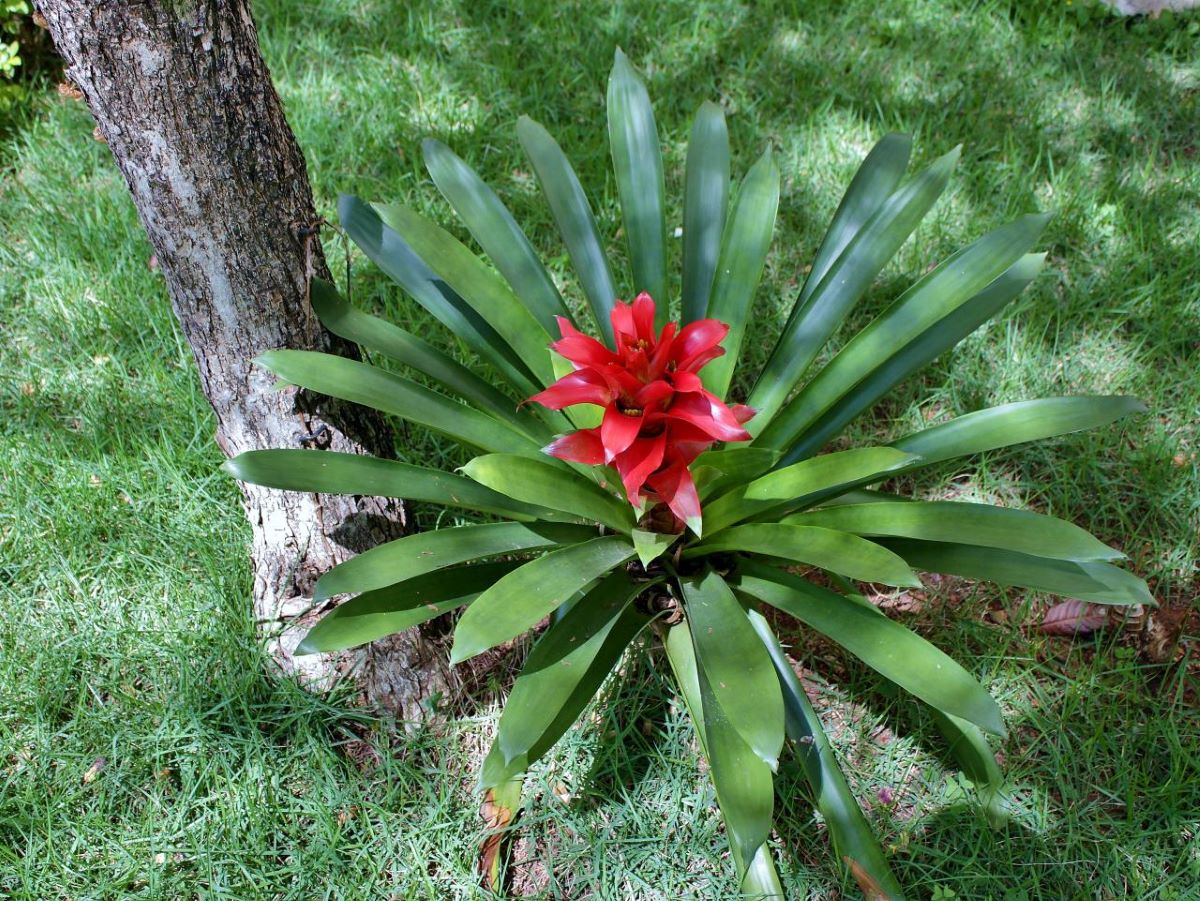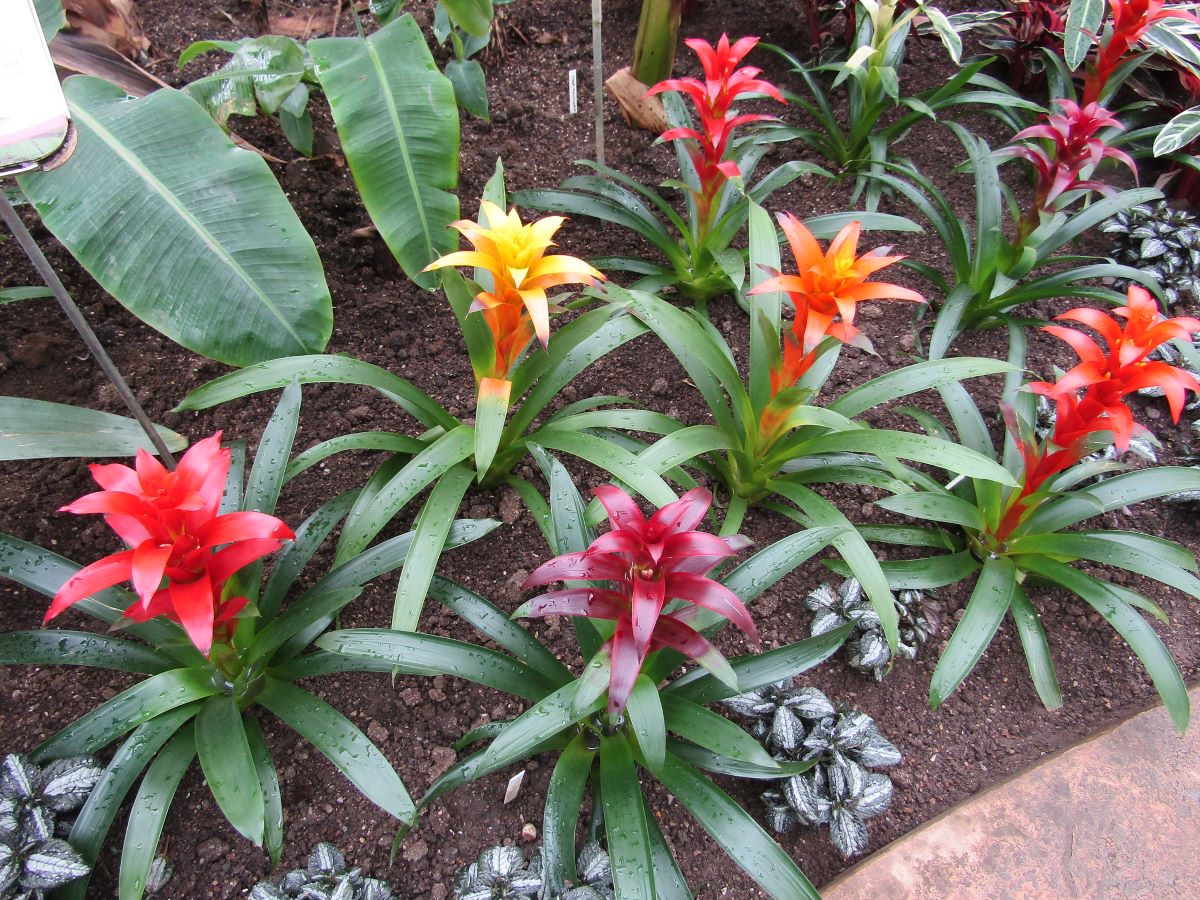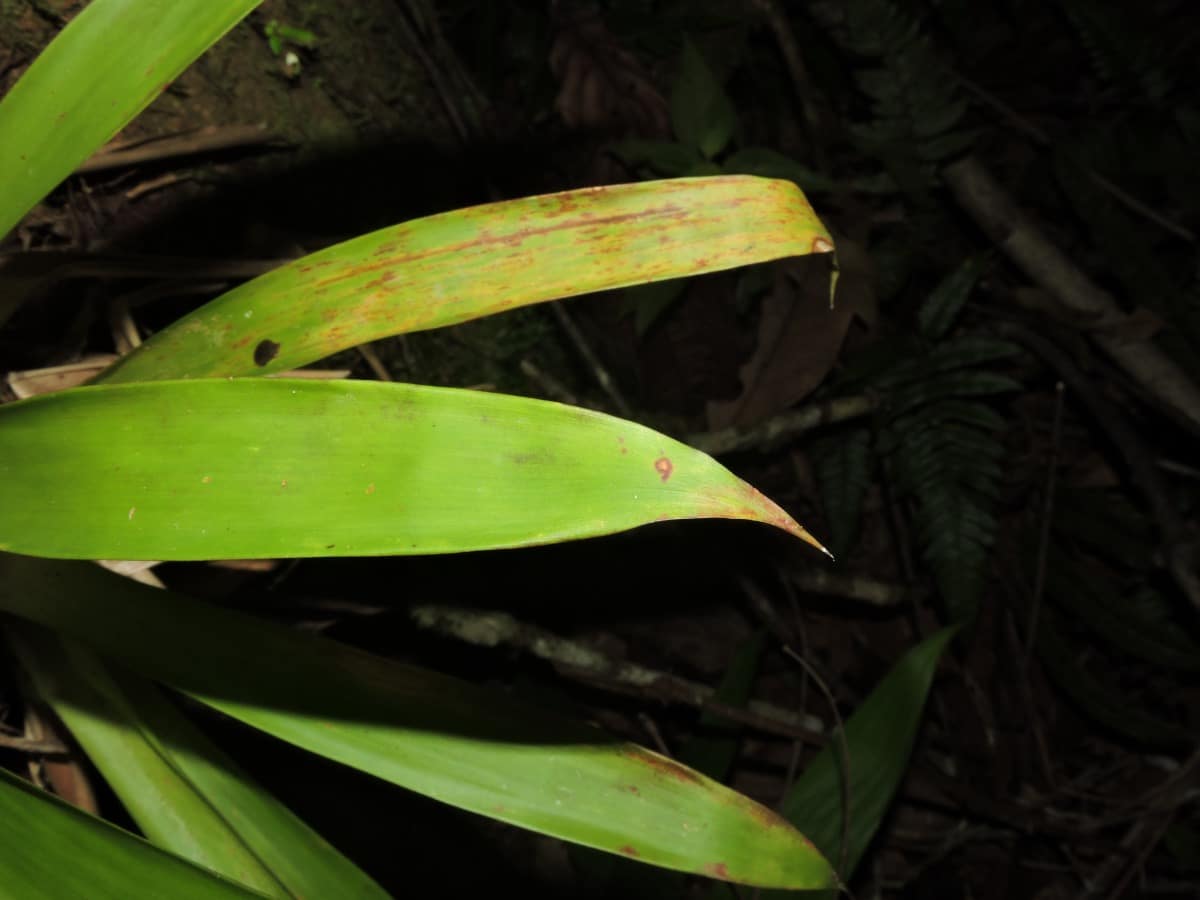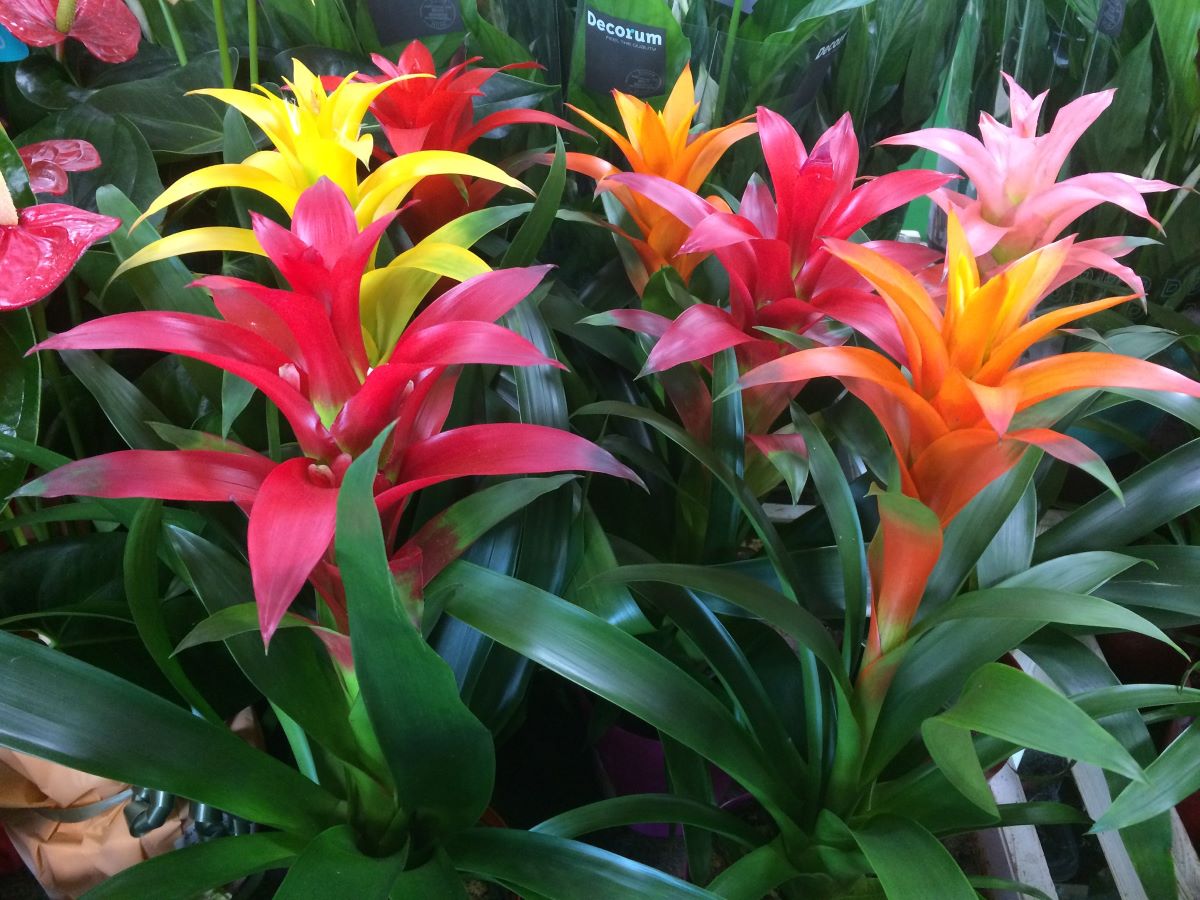
Image - Flickr / Mauricio Mercadante
Bromeliads are all beautiful, but the vast majority do not withstand the cold one bit, and they also do not adapt well to indoor conditions. And this happens with the Guzmania lingulata.
It is a plant that we can easily find for sale in nurseries, usually with the label that tells us that it "is" indoors. We take her home, and for a while she looks beautiful, but after she flourishes things go from bad to worse. How do you take care of it?
Origin and characteristics

Image - Flickr / Leonora (Ellie) Enking
Our protagonist it is a lively epiphytic plant whose scientific name is Guzmania lingulata, popularly called bromeliad, caraguata, guzmania or scarlet star. It is native to Central America to South America. Its leaves grow in rosettes up to 50 centimeters in diameter, and are wide, dark green in color. From the center of this sprouts an inflorescence composed of bracts (modified leaves that protect the flowers) of bright red, purple or yellow color.
It is hapaxántica, which means that after flowering it dies, not without first leaving suckers. So it is not surprising that when its petals wither, the plant spoils.
What are their cares?
La Guzmania lingulata It is a very, very beautiful plant, which can make the home, or the garden, look beautiful for a few months, and even more so if we let its young grow.
Therefore, if you want to have a copy, we recommend you take care of it in the way that we indicate below. Thus, you can have it healthy:
Location
- Body exterior:: in semi-shadow. You can have it under a tree, or even a palm tree that does not let in much light. You can also make plant compositions with it, either in a planter or in the garden, making sure that it is not exposed directly to the sun to prevent it from burning.
- Interior: Inside the house it must be in a bright room, without drafts and with high humidity. To achieve the latter you can put glasses with water around it, and take the opportunity to put small aquatic plants in them. In this way, you will create a tropical corner that will benefit your guzmania a lot because it will have adequate growth.
Earth

Image -Flickr / Reinaldo Aguilar
Garden
The soil in which we are going to plant Guzmania lingulata it has to be fertile, that is, it must be rich in organic matter. In addition, it is important that you have good drainage, and that it is acidic (pH 4 to 6). It is a plant that in limestone soils has a very poor development: for a time it can grow well, but as soon as its roots touch the limestone it stops and that is when its leaves lose color.
Although it can be solved, even avoided, if it is regularly fertilized with suitable fertilizers, the ideal is, before planting it, make a large hole, cover its sides -except the base- with shading mesh and then fill it with pumice (in sale here) or similar substrates.
Flower pot
If we are going to grow it in a pot, it is necessary that we put a substrate that allows its roots to develop normally. Remember that it is epiphytic, so the more we facilitate its growth, the better. This does not mean that it cannot be well in peat, because it can (I myself have a few epiphytic bromeliads in the soil since 2019 and they are fine).
But if we decide to have it in a container, It is preferable to apply substrates such as pumice, akadama, or some mixture such as pomx mixed with 40% kanuma, or substrate for acidic plants (for sale here) mixed with akadama (for sale here) in equal parts.
Also, the pot must have holes in its base. Only then will the water that does not leak out, and the roots will not rot.
Irrigation and fertilizer
It has to be watered 3-4 times a week in summer, a little less the rest of the year. Use rainwater or water without lime, because as we have mentioned before, it does not like limestone. To do this, you have to fill the funnel every time it runs out.
Regarding the fertilizer, it is advisable to fertilize it with an orchid fertilizer such as this (not an orchid, but has similar nutritional needs) during spring and summer. But yes, the instructions must be followed to the letter, as an overdose could be fatal.
Multiplication
It multiplies well by separating the suckers when they are about 10-15cm tall. Another option is, if it is potted and / or if there is no frost in your area, leave them where they are. When the mother plant dies, it is removed, and treated with a multipurpose fungicide. In this way, your offspring will continue to grow unimpeded.
Plagues and diseases
It's very tough. However, when it is in a very dry place, with low humidity, it is vulnerable to attack by aphids. These feed on the sap of leaves and the inflorescence, and are fought with soap and water or if you prefer with anti-aphids insecticides if possible ecological, such as this.
When overwatered, the mushrooms they proliferate in the earth, endangering the roots. Thus, as a preventive measure, it is worth adding copper powder (for sale here) during the rainy season, and whenever we suspect that we add more water than it needs.
Rusticity
La Guzmania lingulata does not resist frost. If your specimen has taken suckers, you have to protect them as soon as the cold arrives and the temperature drops below 15ºC. For example, you can take them to a room, or in a greenhouse.

Image - Flickr / Luca Bove
Good luck with your Guzmania lingulata.